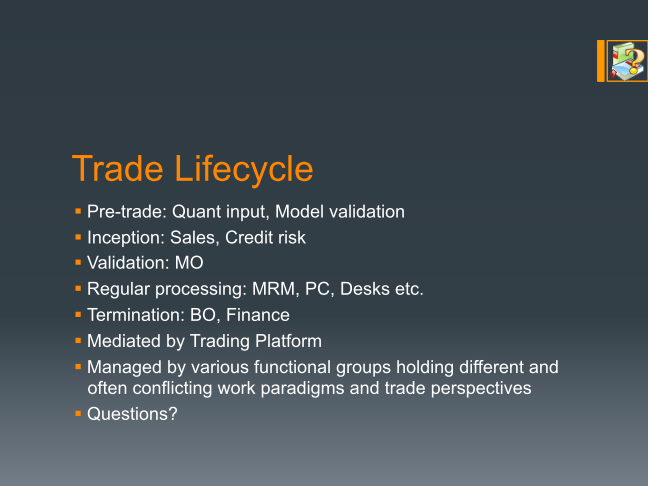With that we have come to the end of our discussion on trade lifecycle. We talked about pre-trade activities such as the quant work on pricing model, and its validation by an independent team. On a per-trade basis, we have the sales and credit check activities. Once a trade is initiated, it goes through the initial validation work by Middle Office, followed by regular processing by a large number of teams, such as Market Risk Management for limits monitoring and reporting, Product Control for valuation checks and reserve calculations, and trading desks for hedge rebalancing and risk management. During the termination phase of the life of a trade, it is the back office teams that are active in settlements and reporting.

As we saw, most of the activities, especially during the inception and up to the termination of a trade, the trading platform plays a crucial role in mediating the processes and conveying the trade from one business unit to the next. But these different business units work with their own entrenched work paradigms, and their perspective on what a trade is or what their work involves can be radically different from one another. Since the trading platform cuts across multiple teams, it has to cater to these differing perspectives, which is the last section of this series starting the next post.

